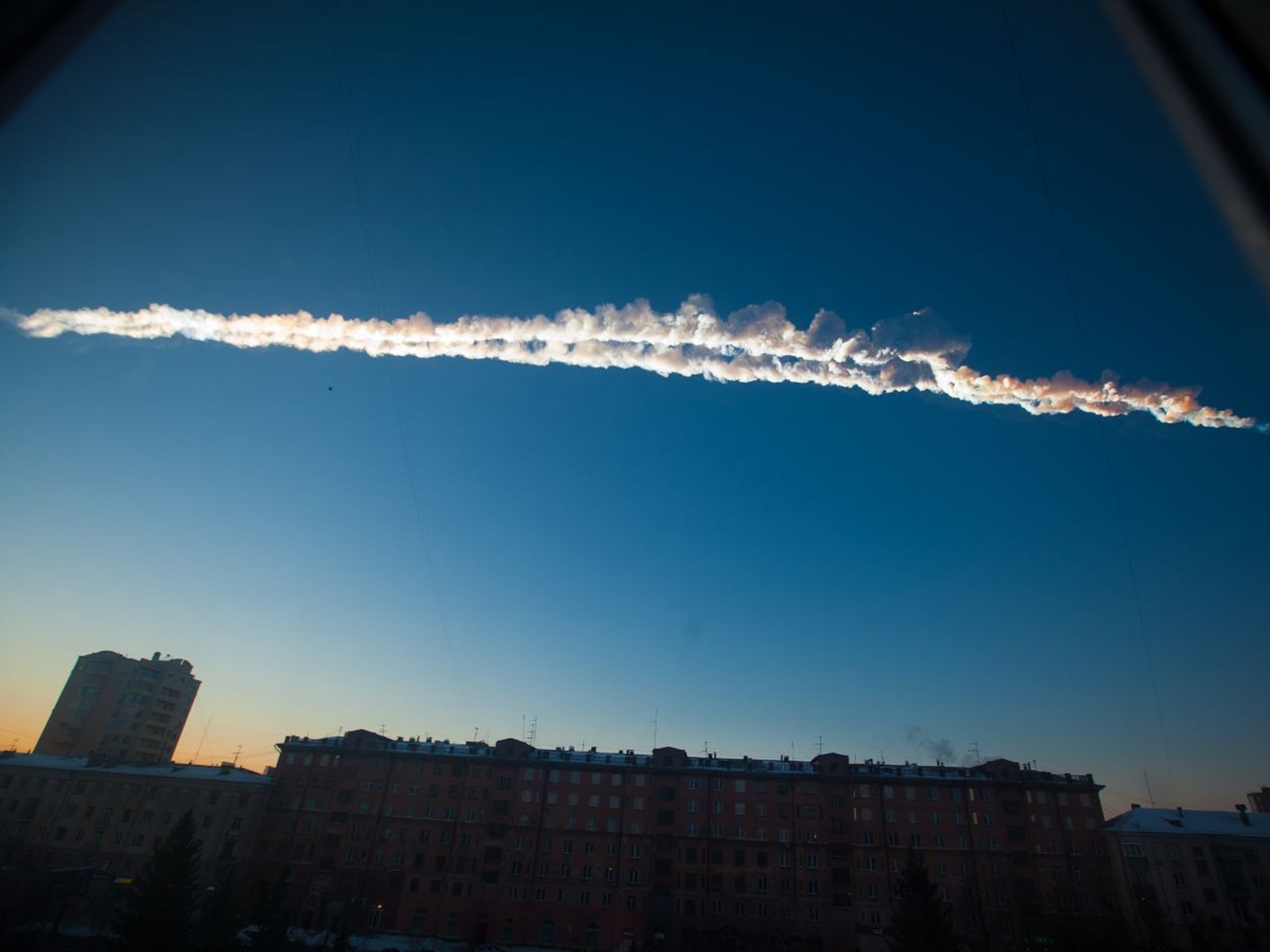Prepare for Earth to be hit by meteor in your lifetime, says Nasa chief
‘Dinosaurs did not have a space programme. But we do, and we need to use it’
Your support helps us to tell the story
From reproductive rights to climate change to Big Tech, The Independent is on the ground when the story is developing. Whether it's investigating the financials of Elon Musk's pro-Trump PAC or producing our latest documentary, 'The A Word', which shines a light on the American women fighting for reproductive rights, we know how important it is to parse out the facts from the messaging.
At such a critical moment in US history, we need reporters on the ground. Your donation allows us to keep sending journalists to speak to both sides of the story.
The Independent is trusted by Americans across the entire political spectrum. And unlike many other quality news outlets, we choose not to lock Americans out of our reporting and analysis with paywalls. We believe quality journalism should be available to everyone, paid for by those who can afford it.
Your support makes all the difference.Dangerous asteroids flying past Earth are not rare, and more meteor strikes happen than the public is aware of, the head of Nasa has said.
At the International Academy of Astronautics’ Planetary Defence Conference on Monday, Nasa administrator Jim Bridenstine said: “I wish I could tell you these events are exceptionally unique … but they’re not.”
He said more work is now underway to protect our planet from the impact of meteor strikes.
While the subject has long been the preserve of big-budget action films, he said: “What we’re doing is very serious.”
“We have to make sure that people understand that this is not about Hollywood, it’s not about movies,” he said.
“This is about ultimately protecting the only planet we know, right now, to host life and that is the planet Earth.”
Mr Bridenstine used the example of the Chelyabinsk Event in 2013, in which a meteor about 65 feet across entered the Earth’s atmosphere over Russia. The huge blast it created as it entered injured more than 1,500 people, and damaged over 7,000 buildings.
Statistically, meteor events of that size happen once every 60 years, but Bridenstine pointed out there have been three such incidents over the last 100 years.

On the very same day as the Chelyabinsk Event, another, even larger asteroid, measuring 100 feet across and known as “Duende” passed the Earth.
“We are fortunate that it missed,” Mr Bridenstine said. It is forecast to fly past Earth again in 2123.
“We have to use our systems, use our capabilities to ultimately get a lot more data, and we have to do it faster,” he added.
“We know for a fact that the dinosaurs did not have a space programme. But we do, and we need to use it.”
Nasa has been directed by the US government to detect and track 90 per cent of near-Earth objects 460 feet or larger.
But there are an estimated 25,000 objects in this category, and the agency has only catalogued about one third of them to date.
Mr Bridenstine said tackling large asteroids which posed a threat to Earth required more resources and more countries needed to work to build more powerful rockets like Nasa’s Space Launch System, which will be the most powerful rocket it has ever built.
He said this was necessary “so that ultimately, when discoveries are made, and risk needs to be mitigated, we have more options than we would otherwise have.”
The Space Launch system is to be used for the next manned mission to the Moon in 2024.
Nasa is also working on a joint project with Elon Musk’s Space X company to test their ability to deflect threatening meteors.
The Double Asteroid Redirection Test (DART) will send a rocket to collide with a near-Earth asteroid in an attempt to change its path.

Join our commenting forum
Join thought-provoking conversations, follow other Independent readers and see their replies
Comments